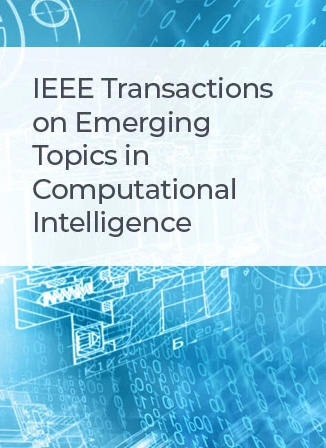Population Stream-Driven Scalable Evolutionary Many-Objective Optimization
IF 5.3
3区 计算机科学
Q1 COMPUTER SCIENCE, ARTIFICIAL INTELLIGENCE
IEEE Transactions on Emerging Topics in Computational Intelligence
Pub Date : 2025-02-17
DOI:10.1109/TETCI.2025.3537916
引用次数: 0
Abstract
Solving multi-objective optimization problems with scalable decision variables and objectives is an ongoing challenging task. This study proposes a new evolutionary framework that a series of continuously generated subpopulations are used to approximate the entire Pareto-optimal front. These dynamic subpopulations are abstracted as a population stream. In this framework, one subpopulation is only responsible for searching for a Pareto-optimal solution. Diversity is emphasized among converged solutions coming from different subpopulations, striving to alleviate the conflict between diversity and convergence. To improve the convergence of the newly generated subpopulations, the polynomial fitting method is performed on the obtained solutions to model the relationships among decision variables, which are then used to assist in the generation of new subpopulations. Moreover, an adaptive granularity grid-based environmental selection strategy is proposed to maintain a set of well-diversifying converged solutions. Lastly, extensive experiments are conducted to demonstrate the proposal's superiority by comparing it with 19 representative algorithms in 45 test instances with 3-15 objectives and 300-1500 decision variables.种群流驱动的可扩展进化多目标优化
求解具有可扩展决策变量和目标的多目标优化问题是一项具有挑战性的任务。本研究提出了一个新的进化框架,该框架使用一系列连续生成的子种群来近似整个帕累托最优前沿。这些动态子种群被抽象为种群流。在这个框架中,一个子种群只负责寻找帕累托最优解。强调来自不同子种群的收敛解之间的多样性,努力缓解多样性与收敛性之间的冲突。为了提高新生成的子种群的收敛性,对得到的解进行多项式拟合,对决策变量之间的关系进行建模,然后使用决策变量来辅助新子种群的生成。此外,提出了一种基于自适应粒度网格的环境选择策略,以保持一组多样化的收敛解。最后进行了大量的实验,将该算法与19种代表性算法进行了比较,在45个测试实例中,目标为3-15个,决策变量为300-1500个。
本文章由计算机程序翻译,如有差异,请以英文原文为准。
求助全文
约1分钟内获得全文
求助全文
来源期刊

IEEE Transactions on Emerging Topics in Computational Intelligence
Mathematics-Control and Optimization
CiteScore
10.30
自引率
7.50%
发文量
147
期刊介绍:
The IEEE Transactions on Emerging Topics in Computational Intelligence (TETCI) publishes original articles on emerging aspects of computational intelligence, including theory, applications, and surveys.
TETCI is an electronics only publication. TETCI publishes six issues per year.
Authors are encouraged to submit manuscripts in any emerging topic in computational intelligence, especially nature-inspired computing topics not covered by other IEEE Computational Intelligence Society journals. A few such illustrative examples are glial cell networks, computational neuroscience, Brain Computer Interface, ambient intelligence, non-fuzzy computing with words, artificial life, cultural learning, artificial endocrine networks, social reasoning, artificial hormone networks, computational intelligence for the IoT and Smart-X technologies.
 求助内容:
求助内容: 应助结果提醒方式:
应助结果提醒方式:


